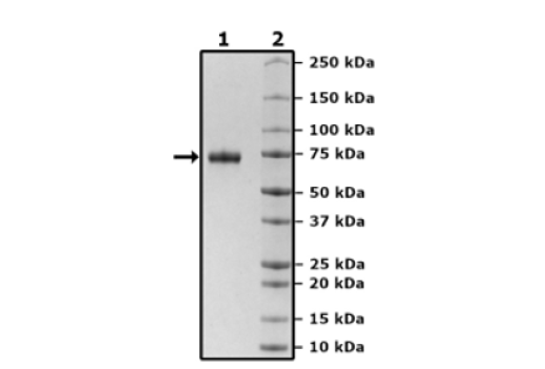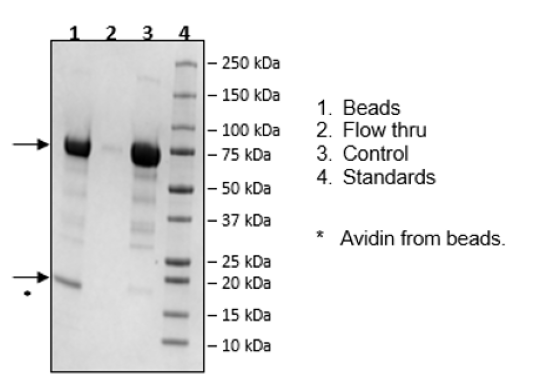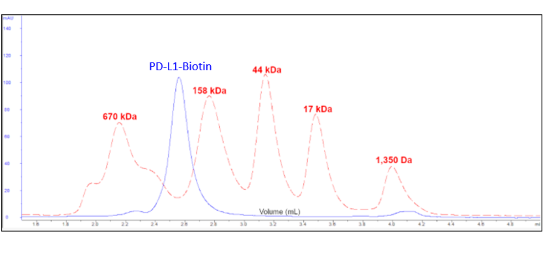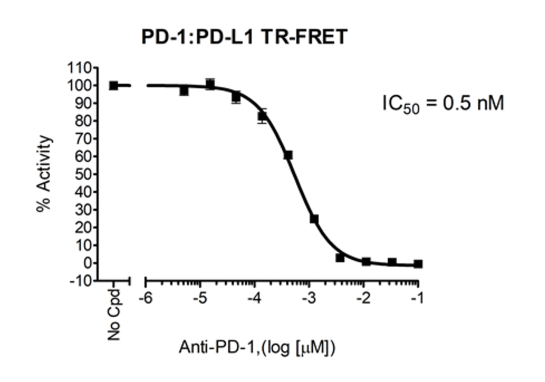PD-L1 (CD274), Fc fusion, Biotin-labeled (Human) HiP™ Recombinant
Human secreted Programmed Cell Death 1 Ligand 1 (PD-L1)-Fc fusion protein, encompassing amino acids 19-239, fused at the C-terminus with the Fc portion of human IgG1 followed by an Avi-tag™. HiP™ indicates a high purity protein (≥90% pure) and less than 10% aggregation as measured by gel filtration
≥90%
8 mM phosphate, pH 7.4, 110 mM NaCl, 2.2 mM KCl, and 20% glycerol
This protein is enzymatically biotinylated using Avi-Tag™ technology. Biotinylation confirmed to be ≥90%.
For more information on enzymatic biotinylation, please see our Tech Note.
Programmed Cell Death 1 Ligand 1 (PD-L1), also known as CD274 and B7 homolog 1 (B7-H1), is an immune checkpoint acting as a negative regulator of immune cells. It helps maintain immune homeostasis and prevent excessive immune responses. Normally expressed at the surface of antigen-presenting cells, it is also found in tumor cells and contributes to cancer-associated immune suppression through its interaction with PD-1 expressed in T cells. Checkpoint inhibitors targeting the interaction between PD-L1 and PD-1 (such as pembrolizumab and nivolumab) have demonstrated significant clinical activity in various types of cancer and proved transformative for cancer therapy.
1. Freeman, G.J., et al., J Exp Med. 2000 Oct 2;192(7):1027-34.
2. Dong, H., et al., Nat Med. 1999 Dec;5(12):1365-9.






